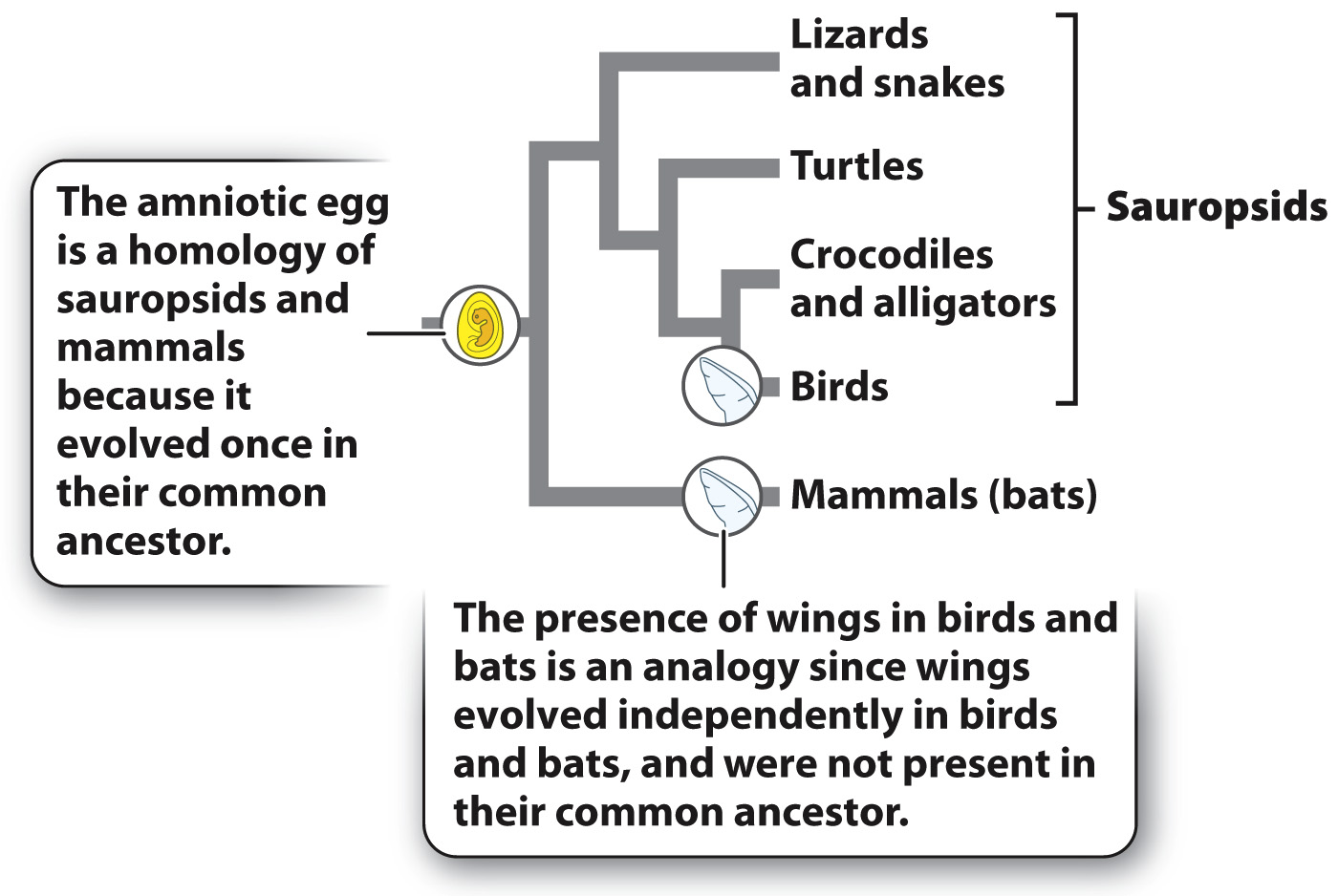Homology is similarity by common descent.
Phylogenetic trees are constructed by comparison of character states shared among different groups of organisms. Characters are the anatomical, physiological, or molecular features that make up organisms. In general, characters have several observed conditions, called character states. In the simplest case, a character can be present or absent—
Character states in different species can be similar for one of two reasons: The character state (for example, helically arranged petals) was present in the common ancestor of the two groups and retained over time (common ancestry), or the character state independently evolved in the two groups as an adaptation to similar environments (convergent evolution).
Consider two examples. Mammals and birds both produce amniotic eggs. Amniotic eggs occur only in groups descended from the common ancestor at the node connecting the mammal and sauropsid branches of the tree, and so we reason that birds and mammals each inherited this character from a common ancestor in which the trait first evolved (Fig. 23.6). Characters that are similar because of descent from a common ancestor are said to be homologous.

Not all similarities arise in this way, however. Think of wings, a character exhibited by both birds and bats. Much evidence supports the view that wings in these two groups do not reflect descent from a common, winged ancestor but rather evolved independently in the two groups. Similarities due to independent adaptation by different species are said to be analogous. They are the result of convergent evolution.
Innumerable examples of convergent evolution less dramatic than wings are known. In some, we even understand the genetic basis of the convergence. For example, echolocation has evolved in bats and in dolphins, but not in other mammals. Prestin is a protein in the hair cells of mammalian ears that is involved in hearing ultrasonic frequencies. Both bats and dolphins independently evolved similar changes in their Prestin genes, apparently convergent adaptations for echolocation. Similarly, unrelated fish that live in freezing water at the poles, Arctic and Antarctic, have evolved similar glycoproteins that act as molecular “antifreeze,” preventing the formation of ice in their tissues.
In principle, two characters or character states are homologous if they are similar because of descent from a common ancestor with the same character or character state; they are analogous if they arose independently because of similar selective pressures. In practice, to determine if characters observed in two organisms are homologous or analogous, we can weigh evidence from where other traits place the two organisms on a phylogenetic tree, we can look at where on the organisms the trait occurs, and we can look at the anatomical or genetic details of how the trait is constructed. Wings in birds and bats are similar in morphological position (both are modified forelimbs) but differ in details of construction (the bat wing is supported by long fingers), and all other traits of birds and bats place them at the tips of different lineages, with many nonwinged species between them and their most recent common ancestor.
469
Quick Check 3 Fish and dolphins have many traits in common, including a streamlined body and fins. Are these traits homologous or analogous?
Quick Check 3 Answer
The traits are analogous, the result of convergent evolution. Both animals are adapted for swimming in water and converged independently on similar traits, including a streamlined body and fins. However, they are only distantly related, as one is a fish and the other is a mammal.